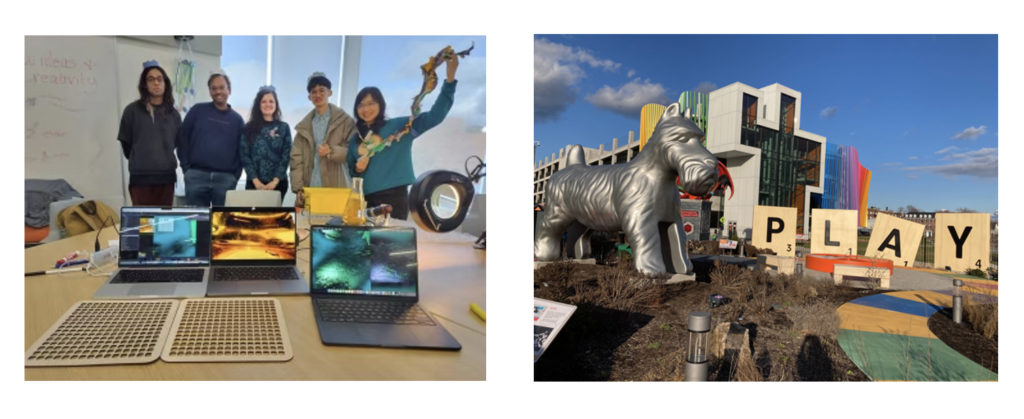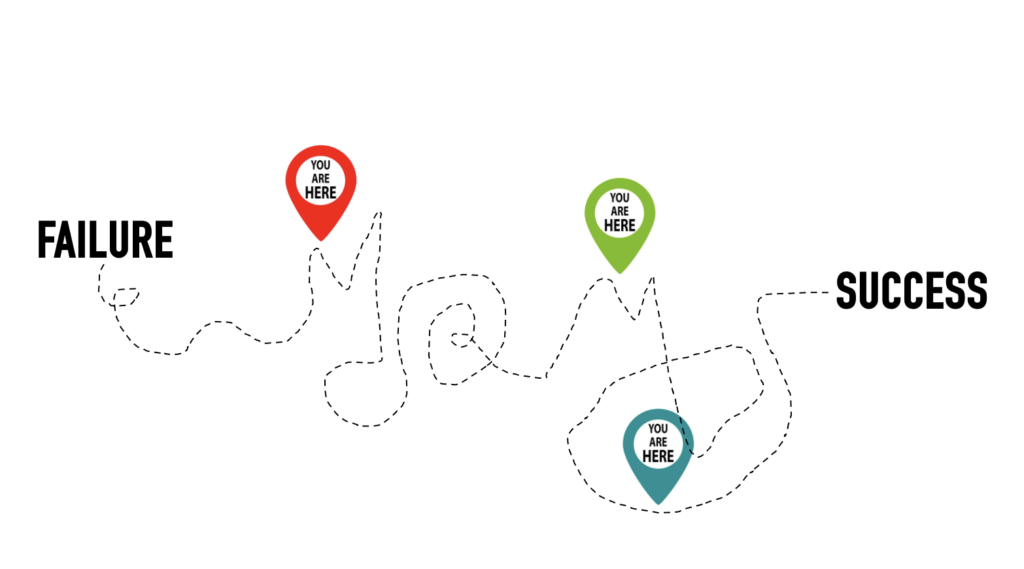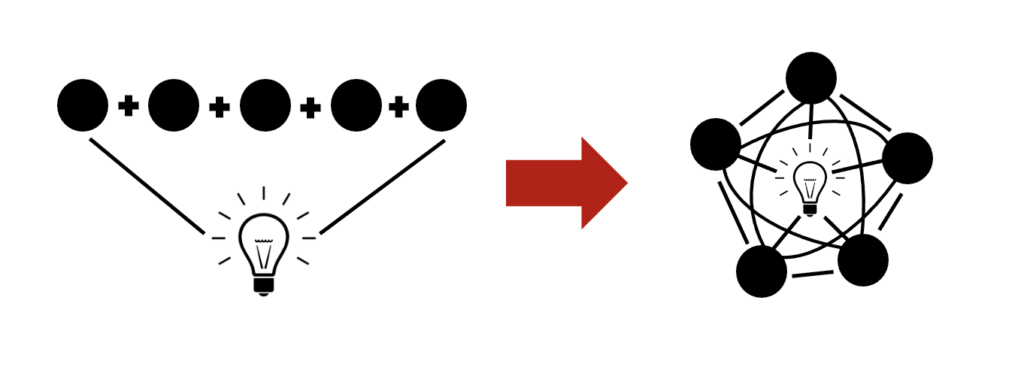Collaboration is crucial in today’s interconnected world as it fosters the exchange of diverse perspectives and expertise, often leading to innovative solutions that individuals working in isolation may not achieve alone. This past week/end (Mar. 14 -17), I had the privilege of participating in the a2ru Emerging Creatives Student Summit at the Rochester Institute of Technology (RIT) and collaborating with people from around the world. This year’s summit was centered on the topic of PLAY: The Impact on How We Create and Relate to the World.
When we arrived at RIT, we were divided into groups to solve a “problem” within the sub-theme of play. My group was tasked with the sub-theme of New Ideas/Creativity. What did I––more importantly we––learn? The real challenges involved in collaborating on an interdisciplinary team. I have worked on interdisciplinary teams before but never quite in this way. My team consisted of one person from each: machine learning, art education, human-centered digital media design, communication, and new media art.
As a group, we had to work through many challenges, like being stuck in a more nebulous, philosophical state (all of us); being unable to decide on any one idea to move forward with; starting any sort of process to work towards an outcome (i.e., getting stuck time and time again); having our respective disciplinary languages and processes align; forgetting about “play” altogether; struggling to bring ourselves back to that center; working through conflict but coming out on the other end just fine; and so on. One surprising discovery that we all had in alignment was realizing that we do not really permit ourselves to “play” in the sense that children or even other adults do. That we define play differently and we kind of lost play in the midst of our process. A trip to the National Museum of Play helped us to reflect more deeply about play and reincorporate it back into our work.

Overall, in a relatively short period of time, we all became very close as we navigated challenges of interdisciplinary work collectively. And we came up with such a fantastic final project to present, which we initially prioritized the outcome as the pinnacle of our project. As we collaborated, however, a profound shift occurred for us all––the outcome became the least important part and our focus shifted from the final product to the collaborative journey itself, and this is where our understanding of each other and synergy truly blossomed. We are people first, and acknowledging our commonalities and our differences is crucial for impactful research. At any one point in time, it would be safe to say our group arrived at success and failure, failure and success, and anywhere in between. If you truly want to learn how a process works, you must try, fail, and try again. It is a very messy process, and it is certainly not easy, but to arrive at higher order solutions, we need to be able to work on interdisciplinary teams.

Over the course of the summit, we moved from a model of cooperation to a model of cooperation and collaboration, but it took some time to get there. Together, cooperation and collaboration translate to much more meaningful work and build a strong foundation for successful teamwork and problem-solving in all aspects of life.

Focusing on the process over the outcome cultivated a culture of learning and growth and though difficult a times, promoted adaptability and flexibility. Ultimately, investing in robust processes lays the foundation for sustainable success and longevity, shaping resilient teams capable of thriving in an ever-changing world.
All in all, I am deeply honored and truly grateful for the opportunity to have been able to participate in this inspiring, stimulating, and fun weekend as we worked through the real-world challenges of collaborating on interdisciplinary teams. I honestly think it has informed each one of us in new and different ways––the languages we speak, how we translate, how our processes are different yet similar, what inclusivity really means, and so much more. It was a growth opportunity for everyone, and I know that each one of us plans to carry our learnings forward in all that we do.
**I am immensely thankful for the opportunity to have attended this event, made possible by the support of the a2RU Scholar Award and the UGA Arts Collaborative: http://arts-collab.uga.edu. This support played a crucial role in enabling my participation, and I am truly grateful.**
Author: Emily A. Dustman
Founder & Director of E-Squared Magazine

It’s that time of year when we resolve to continue good practices, change an undesired trait or behavior, accomplish a personal goal, or otherwise improve in some way.
Personally, I don’t believe in reserving resolutions for just one time a year though – I believe in making resolutions all year long. This time of year, I like to shift my focus and reflect on what lessons I have learned and how I have grown as a person.
The past year may have been surreal, absolutely fantastic, a total doozy, or a mixture of things. Whether you’ve struggled or thrived, you’ve likely learned a lesson or two, so consider asking yourself:
☛ What lessons have I learned?
☛ What did I learn about navigating adversity?
☛ What was I surprised to learn that I could accomplish?
☛ What did I do in 2023 that I’m proud of?
☛ What will I leave behind and carry forward?
As we round the corner into 2024, here’s to a cheerful present, a well-remembered past, and a prosperous year ahead!